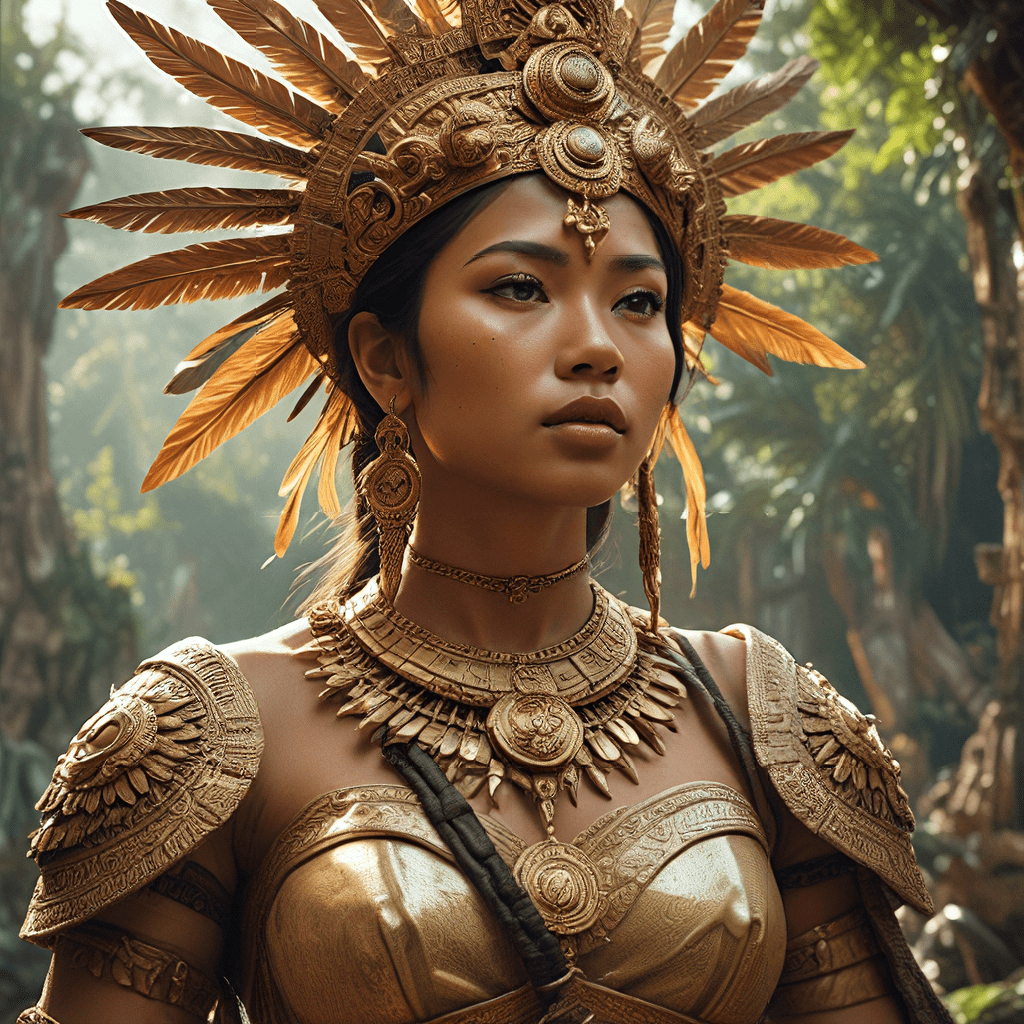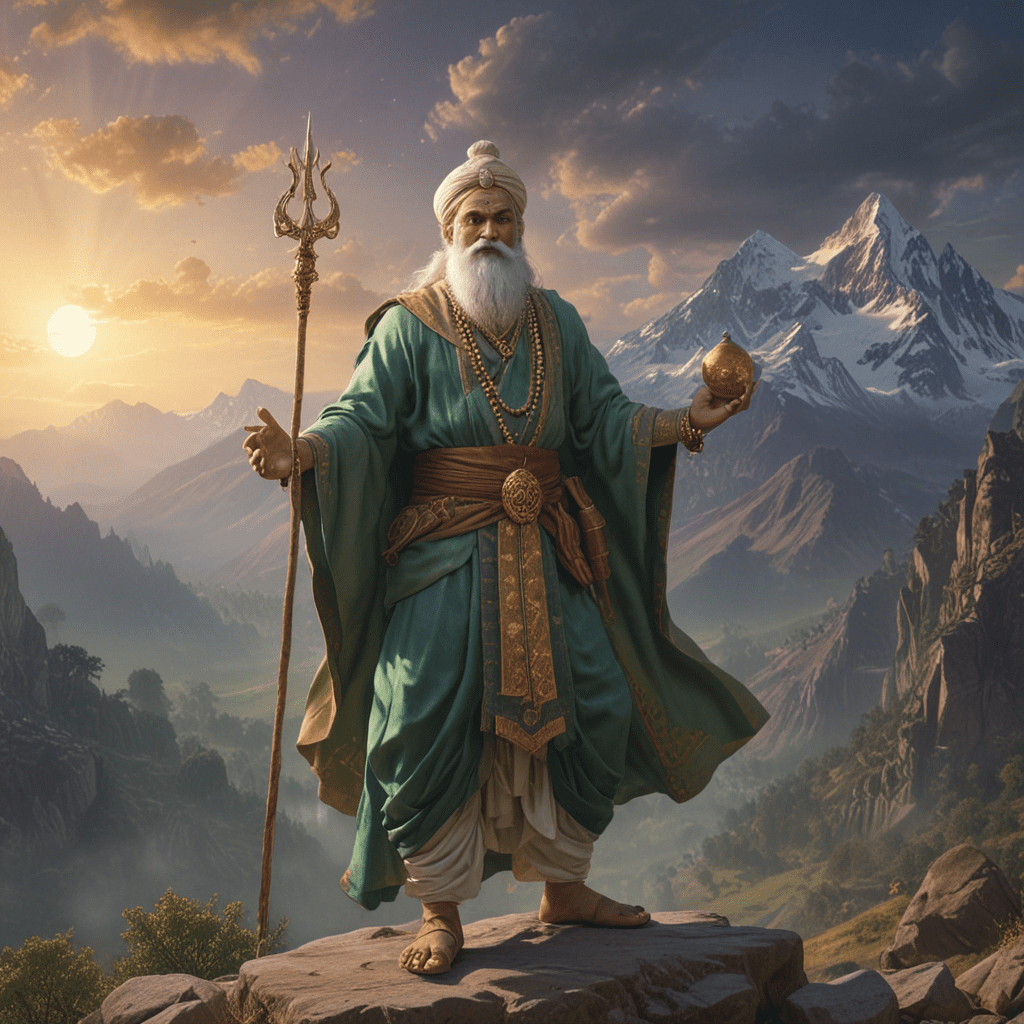Pre-Colonial Filipino Mythology: A Tapestry of Diverse Beliefs
Before the arrival of Spanish colonizers in the 16th century, the Philippines was a vibrant tapestry of diverse indigenous cultures, each with its own unique set of beliefs and myths. These beliefs were deeply intertwined with the natural world, and Filipinos saw themselves as part of a larger cosmic order. They revered deities associated with nature, such as Bathala, the supreme creator god, and various spirits residing in forests, mountains, and rivers.
Filipino mythology was rich in stories about mythical creatures, heroes, and heroines. Some of the most well-known figures include the "diwata," beautiful spirits who lived in the forest, the "kapre," giant, cigar-smoking tree spirits, and the "aswang," shapeshifting creatures that prey on humans. These stories reflected the values and aspirations of the people, teaching them about courage, compassion, and the importance of community.
These myths also served as a way to explain natural phenomena and provide guidance for daily life. For example, the story of "Malakas at Maganda," the first man and woman, explained the creation of the world, while the myth of "Lam-ang," a legendary warrior, emphasized the importance of strength and valor.
The Impact of Spanish Colonialism on Filipino Beliefs
The arrival of the Spanish in 1521 marked a turning point in Filipino history and culture, profoundly impacting their beliefs and mythology. The Spanish, driven by a desire to convert the Filipinos to Christianity, actively sought to suppress indigenous beliefs and practices, deeming them pagan and heretical.
Their campaign against indigenous beliefs involved the destruction of sacred sites, the banning of traditional rituals, and the persecution of those who refused to convert. This suppression led to the marginalization of many traditional myths and stories, as people feared reprisal for practicing their ancestral beliefs.
The Suppression of Indigenous Beliefs: A Legacy of Christianization
The Spanish colonization led to the widespread adoption of Christianity in the Philippines, resulting in a significant shift in the religious landscape. Catholic doctrines replaced indigenous beliefs, leading to the assimilation of many Filipino practices into Christianity.
The suppression of indigenous beliefs had a lasting impact on Filipino culture. Many traditional rituals and festivals were either abandoned or adapted to fit within the framework of Christianity. This process of assimilation gave rise to a unique blend of indigenous and Christian traditions, highlighting the resilience of Filipino culture.
The Adaptation and Syncretism of Indigenous Beliefs
Despite the efforts of the Spanish to eradicate indigenous beliefs, many Filipinos retained their cultural heritage through various forms of adaptation and syncretism. They often combined Christian symbols and practices with their own traditional beliefs, finding ways to express their faith within the context of their ancestral heritage.
For instance, the "Santacruzan," a procession celebrating the finding of the True Cross, incorporated elements of traditional festivals. This blending of beliefs highlights the ingenuity of Filipinos in navigating the cultural changes brought about by colonialism.
The Influence of Spanish Mythology and Folklore
Spanish colonialism also introduced new myths and stories to the Philippines, influencing Filipino folklore and cultural expressions. These stories, often featuring characters like "Don Juan" and "La Llorona," became part of the Filipino cultural landscape, adding another layer of complexity to their rich mythology.
The Spanish also brought with them their own set of beliefs and superstitions, which blended with pre-existing Filipino traditions, further enriching the tapestry of beliefs. These influences continue to be evident in modern Filipino culture, shaping their art, literature, and cultural expressions.
The Role of Animism and Spirit Worship in Filipino Mythology
Filipino mythology is deeply rooted in animistic beliefs, recognizing the presence of spirits in the natural world. This belief system, prevalent in many indigenous cultures, emphasizes the interconnectedness of humans with nature and the spirit realm. Filipinos believed that spirits resided in trees, mountains, rivers, and other natural elements, influencing human lives and demanding respect.
Spirit worship played a crucial role in pre-colonial Filipino society. People paid homage to these spirits through offerings, rituals, and prayers, seeking their favor and protection. The belief in spirit communication was ingrained in their everyday lives, influencing decision-making, agricultural practices, and community interactions.
Examples of spirit worship include the veneration of "diwata," beautiful spirits inhabiting forests and mountains, and the "anito," spirits associated with ancestors, nature, and specific places. These spirits were believed to possess power and influence, requiring appeasement and respect to maintain harmony in the natural world.
The Significance of Ancestral Spirits and the Concept of “Kaluwalhatian”
Ancestral spirits, known as "kaluluwa" in Filipino, hold a prominent place in their mythology and culture. They are believed to remain connected to their families, watching over them and guiding their actions. Filipinos believed that ancestors, through their "kaluluwa," continue to play a role in the lives of their descendants long after their physical demise.
The concept of "kaluwalhatian," a term encompassing the idea of glory, honor, and spiritual excellence, is closely linked to ancestral spirits. It emphasizes the importance of honoring ancestors and upholding their legacy, contributing to the well-being of the community. Filipinos strive to live lives worthy of their ancestors, upholding their values and traditions to maintain a positive connection with the spirit world.
The belief in ancestral spirits influenced various aspects of pre-colonial Filipino life, including social structure, kinship ties, and the importance of lineage. These beliefs played a significant role in the community's sense of identity and belonging, connecting them to their past and shaping their understanding of the present.
The Impact of Colonialism on Filipino Rituals and Festivals
Spanish colonization had a profound impact on Filipino rituals and festivals, many of which were linked to indigenous beliefs and practices. The Spanish, in their efforts to Christianize the Filipinos, suppressed and often banned many traditional rituals, deeming them pagan and heretical.
However, many Filipinos adapted their rituals and festivals to incorporate Christian elements, resulting in a unique blend of indigenous and Christian traditions. For instance, the "Pasyon," a dramatic retelling of the Passion of Christ, was often performed during the Lenten season, incorporating elements of indigenous storytelling and music.
Similarly, the "Santacruzan," a procession celebrating the finding of the True Cross, incorporated aspects of traditional festivals, including the use of colorful costumes and the inclusion of mythical creatures. These adaptations allowed Filipinos to maintain their cultural heritage while adhering to the new religious order imposed by the Spanish.
The Resilience of Indigenous Beliefs: A Legacy of Cultural Resistance
Despite the efforts of the Spanish to suppress indigenous beliefs, many Filipinos retained their cultural heritage, finding ways to practice their traditions in secret or subtly incorporate them into their daily lives. This resilience demonstrates the enduring nature of Filipino culture and its ability to adapt to external pressures.
Many traditional beliefs persisted in the form of folk tales, songs, and rituals passed down through generations. These stories continued to teach valuable lessons about morality, community, and the importance of respecting the natural world. The endurance of these beliefs signifies the deep connection that Filipinos had with their ancestral heritage and their resistance against cultural assimilation.
The Continued Influence of Filipino Mythology in Contemporary Culture
Filipino mythology continues to exert influence on contemporary culture, evident in various expressions of art, literature, music, and film. The themes and characters found in traditional myths inspire modern-day artists, writers, and filmmakers, giving voice to their cultural heritage.
Popular Filipino films and television shows often feature elements of mythology, incorporating mythical creatures, ancestral spirits, and traditional beliefs into their storylines. These narratives often explore the intersection of the modern world with the ancient traditions, reminding Filipinos of their rich and complex cultural heritage.
The continued influence of Filipino mythology underscores the enduring power of these stories, their ability to inspire and connect people across generations. These myths continue to serve as valuable sources of inspiration, reminding Filipinos of their cultural identity and their connection to the past.
FAQ
Q: How did the Spanish colonizers suppress Filipino mythology?
A: The Spanish actively suppressed indigenous beliefs through measures like destroying sacred sites, banning traditional rituals, and persecuting those who refused to convert to Christianity. Their efforts to erase indigenous beliefs resulted in the marginalization of many traditional myths and stories, leading to a shift in the religious landscape.
Q: Did Filipinos completely abandon their traditional beliefs?
A: While many aspects of Filipino mythology were suppressed during Spanish colonization, Filipinos did not completely abandon their traditional beliefs. Instead, they adapted and syncretized them with Christian practices, creating a unique blend of cultural influences. This process highlights the resilience of Filipino culture and its ability to adapt to external pressures.
Q: How does Filipino mythology continue to influence contemporary culture?
A: Filipino mythology continues to inspire artists, writers, and filmmakers, appearing in contemporary films, television shows, and music. These mediums serve as platforms to explore the intersection of the modern world with ancient traditions, reminding Filipinos of their cultural heritage and the enduring power of their ancestral stories.
Q: What is the significance of "kaluwalhatian" in Filipino mythology?
A: "Kaluwalhatian" encompasses the ideas of glory, honor, and spiritual excellence, emphasizing the importance of honoring ancestors and upholding their legacy. It connects Filipinos to their past, shaping their understanding of the present and their aspirations for the future.



